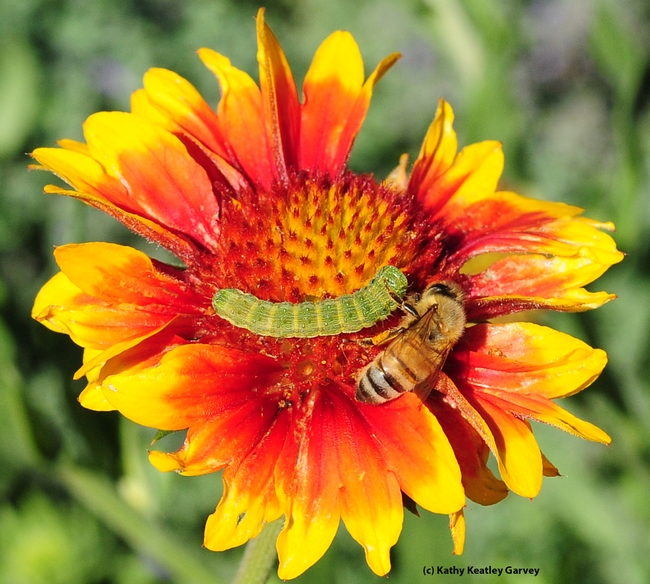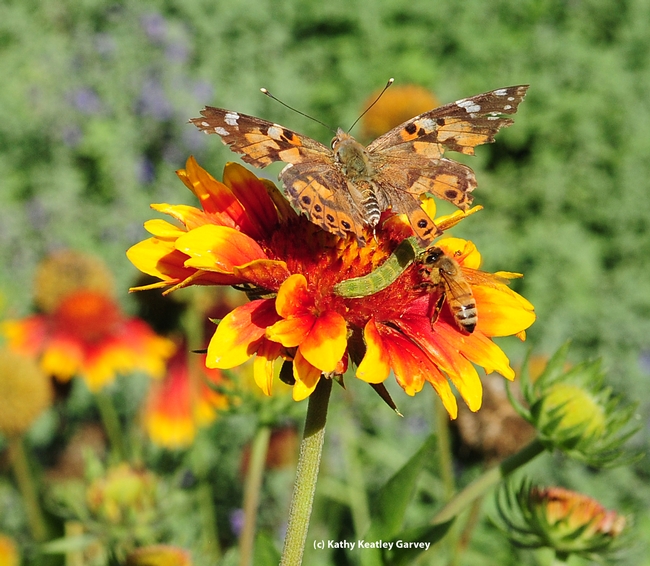There it was.
A green caterpillar, aka larva, aka worm, occupied a blanket flower (Gaillardia) last Friday morning in the Häagen-Dazs Honey Bee Haven, a half-acre pollinator garden on Bee Biology Road at the University of California, Davis.
Soon a honey bee from the nearby Harry H. Laidlaw Jr. Honey Bee Research Facility landed on it. And then a Painted Lady butterfly, its wings tattered from predatory attacks, joined the duo.
Well, what WAS that green caterpillar?
We asked butterfly expert Art Shapiro, distinguished professor of entomology at UC Davis. "Well, it's a Noctuid (owlet moth family)," he said. "It may be one of the infinite variety of color forms of the tobacco budworm, Heliothis virescens, which is common right now--the fine lengthwise striations suggest that--but maybe not."
He suggested we contact his colleague, David Wagner, professor of ecology and evolutionary biology at the University of Connecticut.
"I am guessing that it is either Heliothis virescens as suggested by Art or Helicoverpa zea," Wagner said, looking at the photo. "Both equally probable. The former often favors plants with glandular secretory hairs: Solanaceae, geranium, etc."
According to Wikipedia, the Noctuidae or owlet moths "are a family of robustly build moths that include more than 35,000 known species out of possibly 100,000 total, in more than 4,200 genera."
Noctuidae comprises the largest family in Lepitopdera.
Most fly at night. Many are drawn to sugar and nectar-rich flowers. Some head over to the Häagen-Dazs Honey Bee Haven.
As for Helicoverpa zea, it's a major agricultural pest. It's known by various names, depending on what it consumes. When it consumes tomatoes, it's a tomato fruitworm. Cotton? Cotton bollworm. Corn? Corn earworm. And the list goes on.
We thought that perhaps a neighboring praying mantis would take a culinary interest in the worm, but not so.
The Noctuid appeared to a landing strip for honey bees and Painted Ladies (Vanessa cardui). They kept touching down and pulling up.
As Extension apiculturist Eric Mussen of the UC Davis Department of Entomology quipped: "If you're in the middle of the road, you're going to get hit."
Attached Images:

